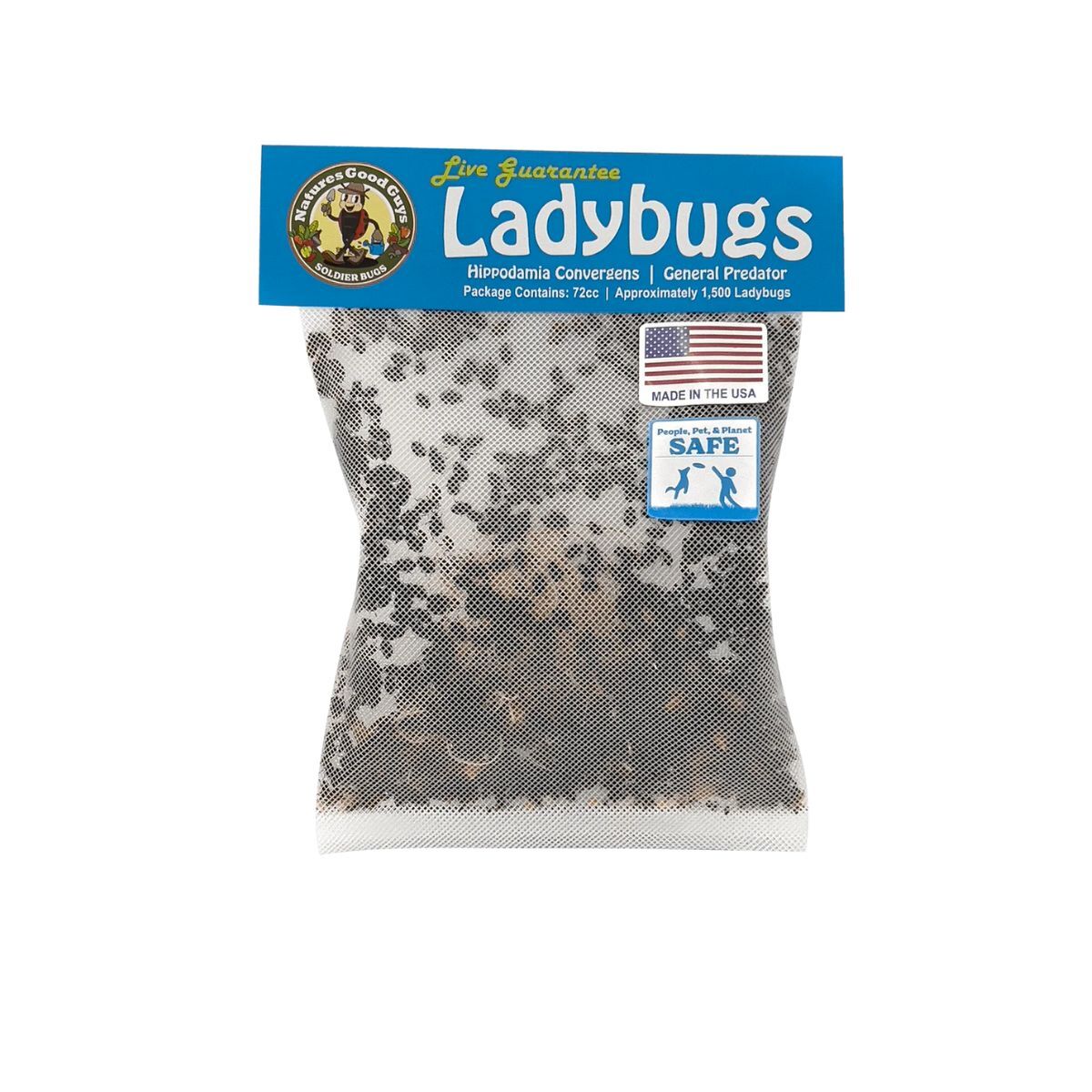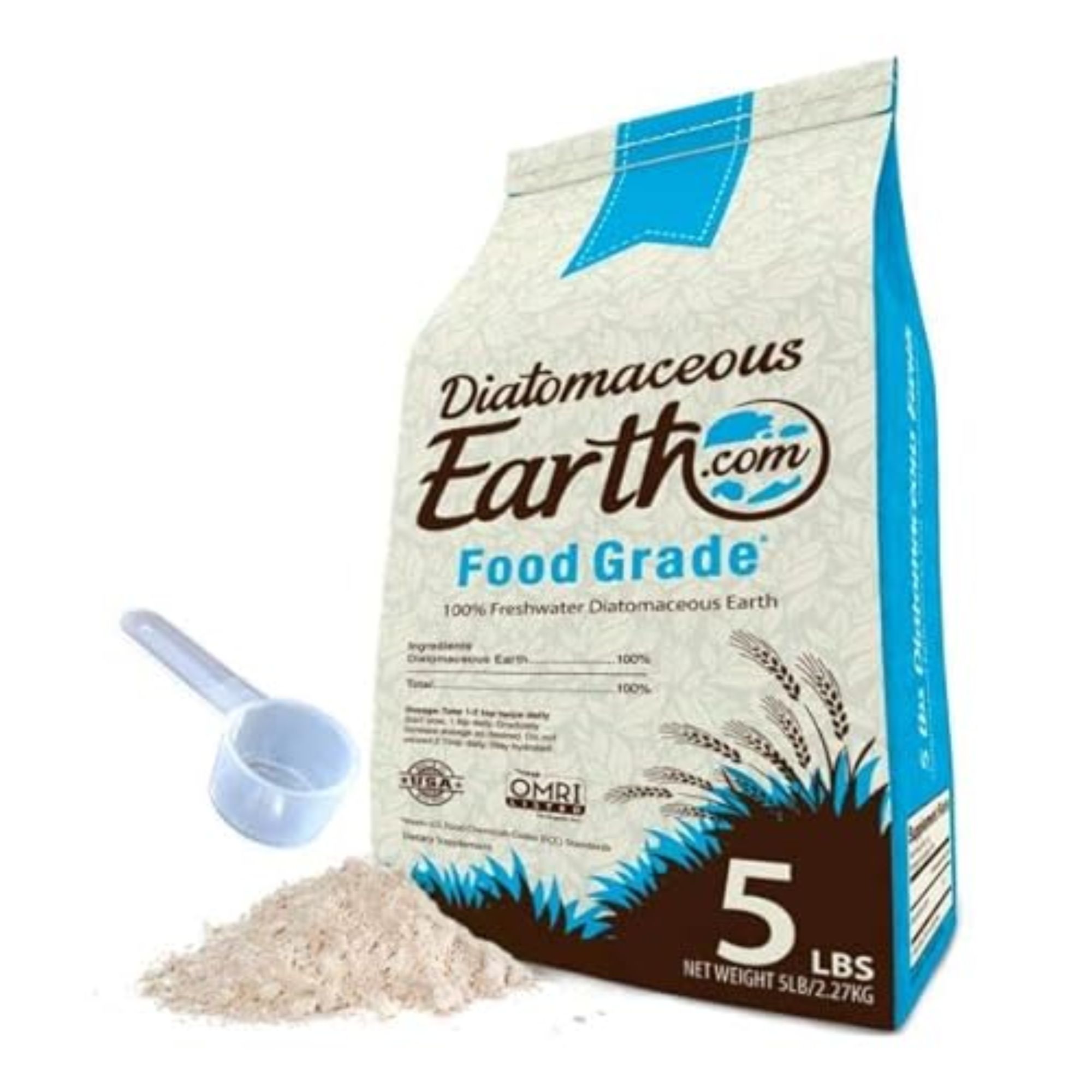Are you struggling with aphids on tomato plants? Experts reveal 5 ways to get rid of these pests for good
See these simple and recommended ways to combat aphids on tomatoes


Aphids may be tiny, but they can pose big problems for your tomato plants. These sap-sucking pests can affect the growth, health, and yield of your tomatoes, so what can you do about aphids on tomato plants?
The good news is that there are several choices at your disposal. There are proven ways to eliminate aphids on tomato plants naturally, and products you can use to combat pest populations.
If you are struggling with these pesky tomato pests, we are here to help. I have grown tomatoes for years, including as a professional kitchen gardener, and also sought some specialists to reveal five expert-recommended ways to deal with aphids on tomato plants.
Aphids on tomato plants - what harm do they cause?
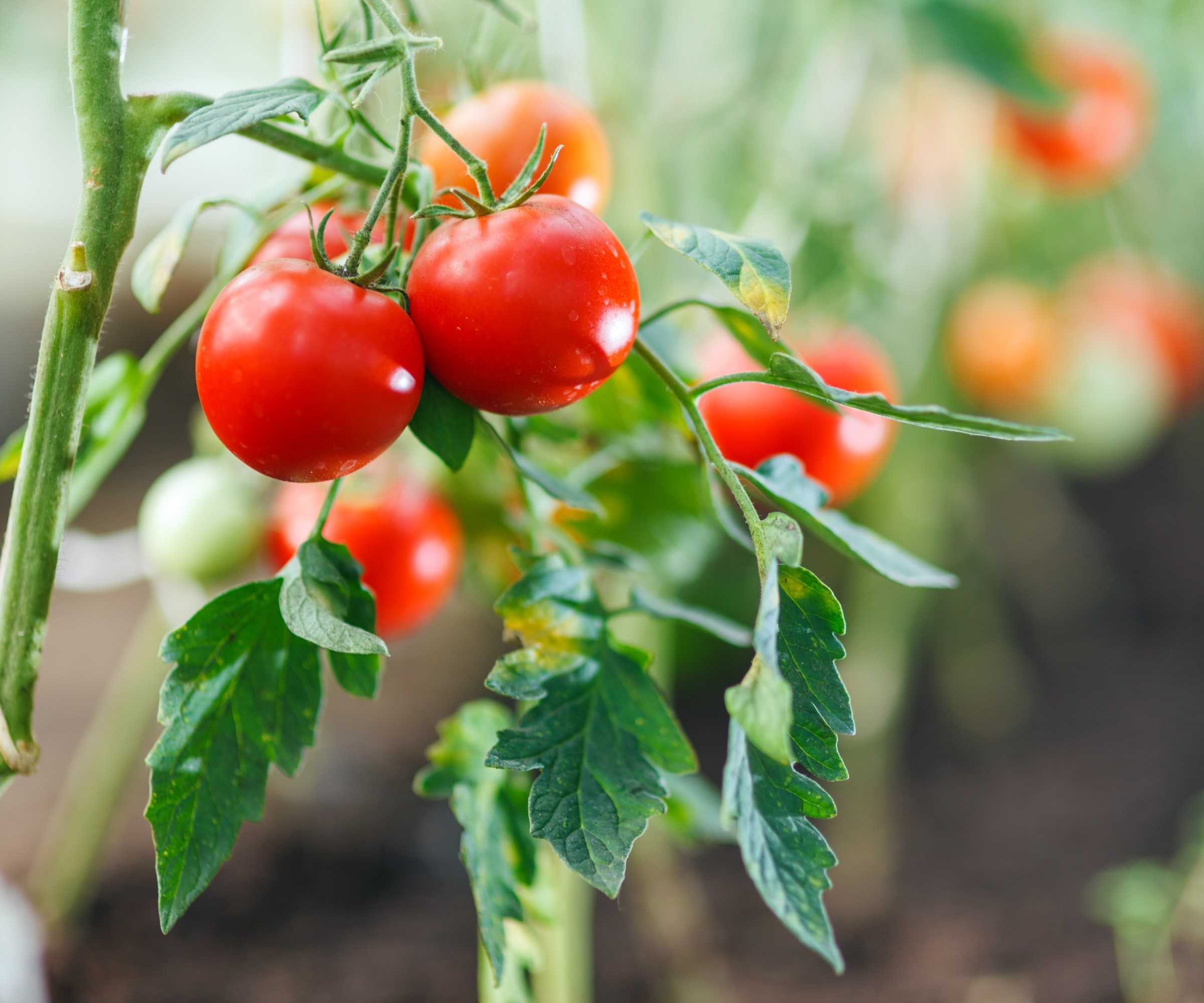
When you are growing tomatoes, the fact is that aphids can cause several harmful issues to the plants. Which is why taking steps to get rid of aphids is important, as the sooner you can eliminate the pests, the better.
Emily Jones, a tomato grower of over 30 years and founder of Tomato Mentor, says of aphids on tomato plants: 'These tiny, sap-sucking insects can cluster on the undersides of leaves, causing leaf curling, stunted growth, and the transmission of viral tomato diseases.'
Weakened plants will not provide you with a great harvest of tomatoes. And, as aphids quickly reproduce, even a small population can get out of control fast, making it vital to put steps in place to get rid of aphids on tomato plants or have means in place to prevent attacks.

Emily has been growing tomatoes for more than 30 years, and she founded the blog Tomato Mentor as a way of helping others to improve their growing methods. She regularly writes about everything from watering tomato plants and common tomato pests to the best growing techniques people should use in their own space.
5 ways to get rid of aphids on tomato plants
The following recommendations will either rid your tomatoes of aphid problems or decrease the chances of your plants falling foul of the sap-sucking pests.
Design expertise in your inbox – from inspiring decorating ideas and beautiful celebrity homes to practical gardening advice and shopping round-ups.
1. Spray with water or organic mixes
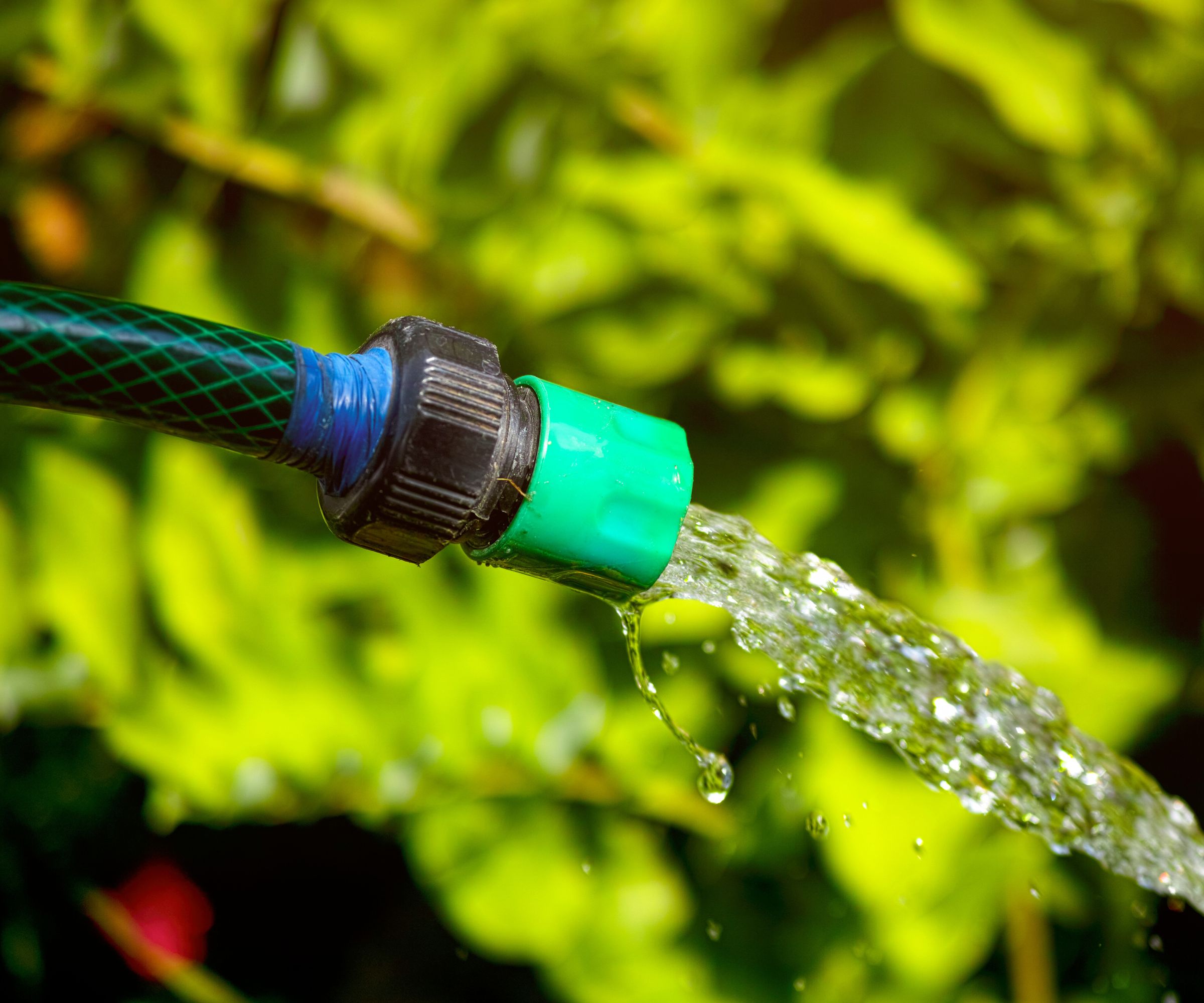
In reality, this is a few potential solutions for aphids on tomato plants all wrapped up under one overarching 'spray' header. As there are several different things you can 'spray' and which you choose may depend on your gardening preferences or ethos.
Let’s start with the simplest solution, as recommended by Susan Mulvihill, an experienced grower and author of The Vegetable Garden Pest Handbook. She advises: 'I just spray aphids with water from our garden hose to knock them off the plants, which is a simple, eco-friendly solution.'
Another organic solution for spraying tomato plants to combat aphids, as suggested by Emily Jones, is insecticidal soap. She says: 'A good organic spray solution is homemade insecticidal soap - a mix of mild liquid soap and water to spray the infected plants, targeting soft-bodied insects like aphids and whiteflies.'
'An alternative to insecticidal soap is neem oil – all you need to do is apply neem oil spray to control the wide range of pests,' adds Emily.

Susan Mulvihill is the author of 'The Vegetable Garden Problem Solver Handbook', available at Amazon, and gardens on 5 acres in Spokane, Washington State. She has also been writing garden columns for the Sunday edition of The Spokesman-Review newspaper for nearly 20 years.
2. Use natural predators
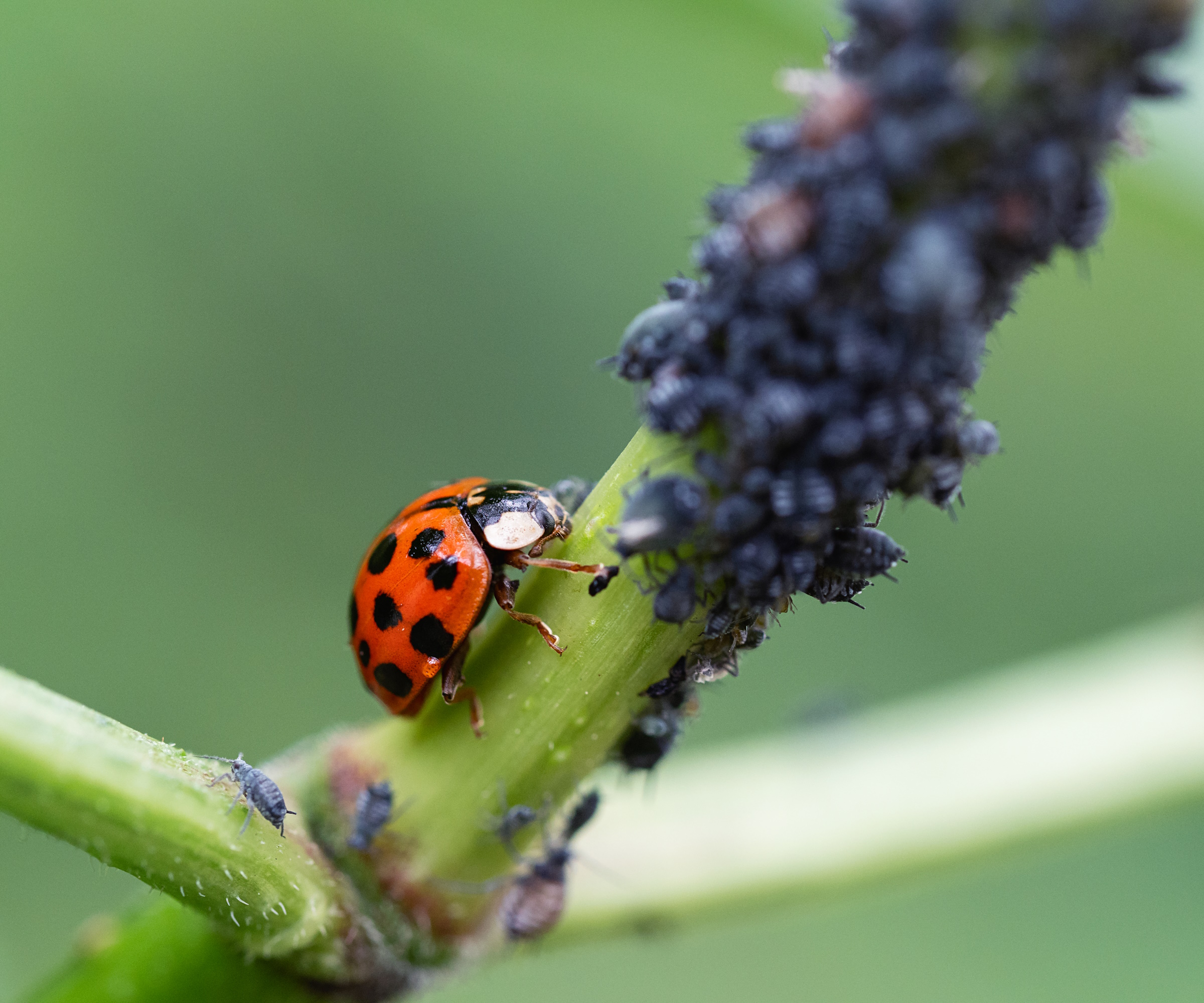
Aphids on tomato plants can be combated by attracting, or introducing, beneficial insects that are natural predators of the sap-sucking pests. For example, ladybugs, lacewings, and hoverflies are predators of aphids and can potentially eat 50 a day, and hundreds in their lifetime.
You can attract ladybugs to a yard, as well as other beneficial insects, by planting pollen-rich plants to tempt in the insects. Umbellifer plants are particularly great at attracting ladybugs and hoverflies. In addition, providing habitats or making a bug hotel will attract beneficials and give them a sheltered spot to settle.
An alternative to luring them in is to buy ladybugs to release into the garden or greenhouse to combat aphid problems. You can also get live lacewings, such as these green lacewing eggs available at Amazon.
It is best to release purchased ladybugs at cooler times of day, such as early morning or in the evening. Emily Jones claims: 'Generally, you need at least 1500 of these bugs to deal with a handful of aphid-infested tomato plants. You can arrange for two or three releases (weeks apart) to achieve maximum effectiveness.'
3. Use diatomaceous earth
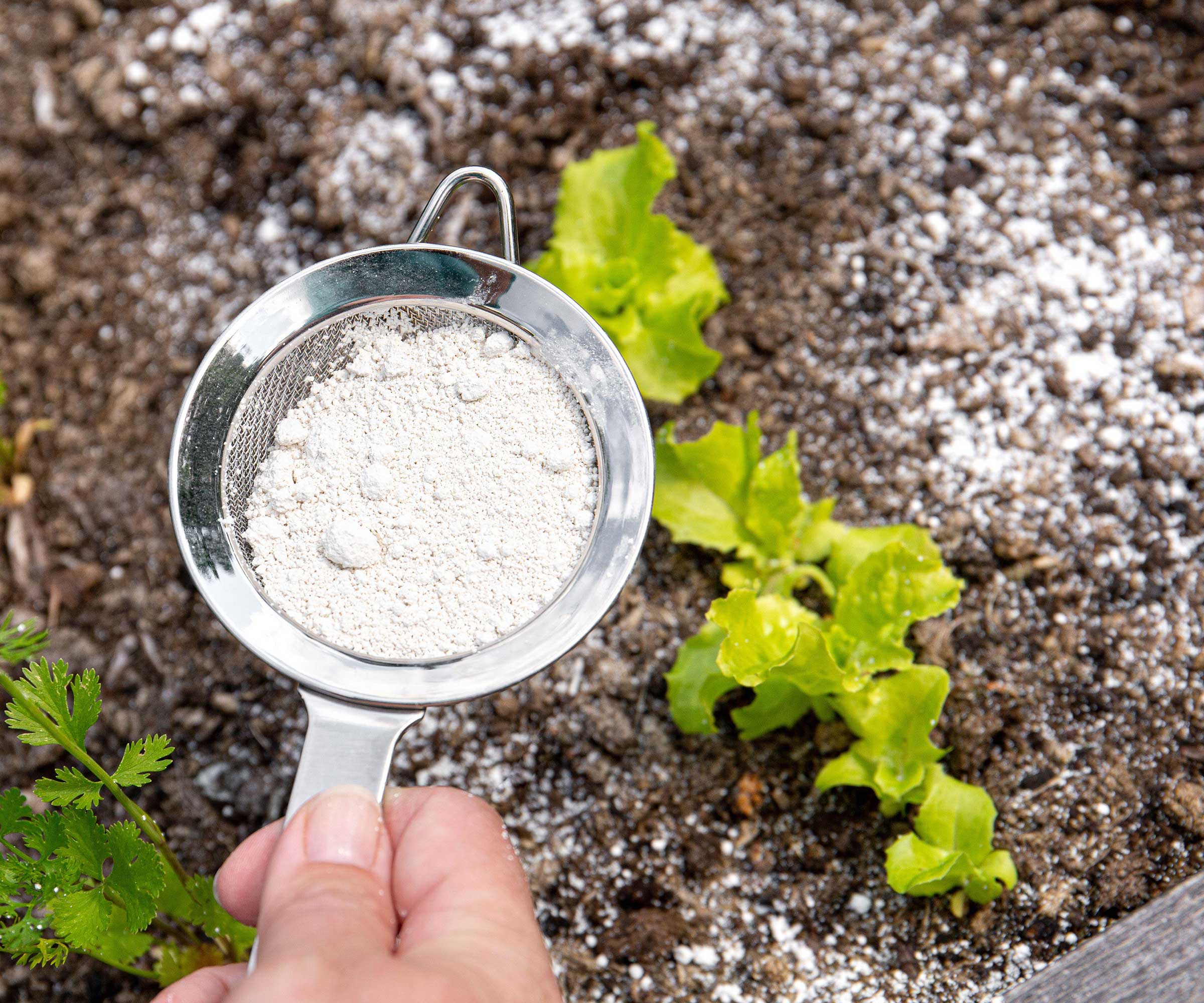
Many readers may wonder, 'What is diatomaceous earth (DE)?' It is a natural, powdery substance made of tiny ground-up fossilized remains and is a useful means of non-toxic pest control. As well as aphids, DE can combat slugs, snails, mites, thrips, and more.
If a tomato plant is infested with aphids, sprinkle the DE on both sides of the leaves, concentrating the application on particularly overrun areas. The aphids will get cut by the jagged substance as they crawl over it, causing them to dehydrate and die.
A couple of pointers about using DE. Firstly, though it is safe for humans and pets, it is always recommended to wear protective glasses and a dust mask (Such as this safety kit available at Walmart). Also, be wary of applying it if the plants are flowering, especially around the blooms themselves, as it also risks killing pollinators.
4. Try companion planting
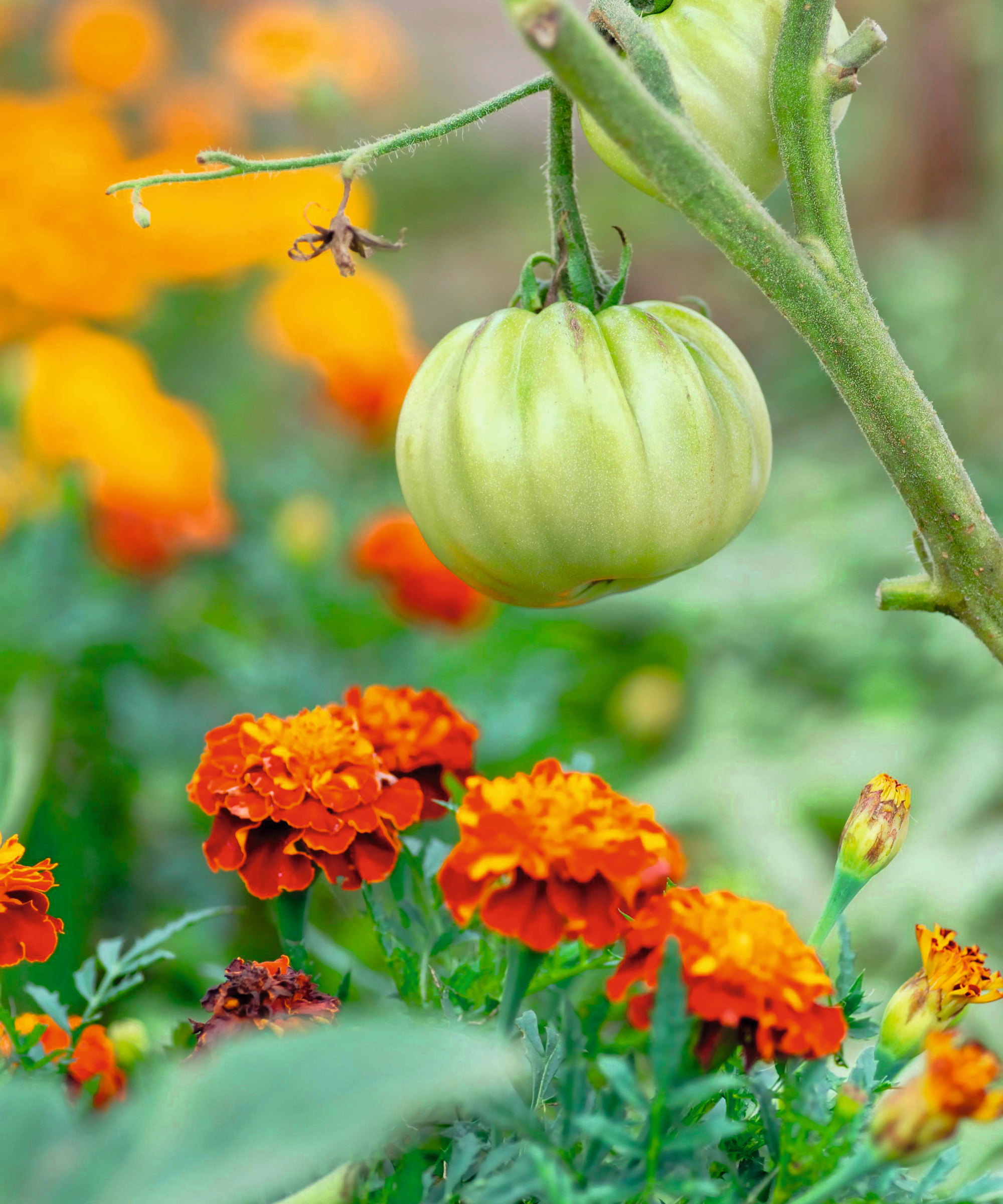
Companion planting is a great form of natural pest control, and certain plants keep aphids at bay, stopping them from coming near your tomatoes. These tomato companion plants all emit strong aromas disliked by aphids, which keep the pests away and mask the presence of the tomato plants.
Alliums such as garlic, onions, and chives will deter aphids with their pungent odour, while strong-smelling aromatic herbs like lavender, rosemary, mint, and dill can confuse pests and keep them away from tomatoes.
During my years as a professional kitchen gardener, I always grew marigolds with tomatoes. This is because the flowers emit a scent that repels many tomato pests, including aphids.
I always recommend planting marigolds in a vegetable garden as they offer many benefits in terms of repelling pests and attracting beneficial insects. These 'Sparky Mixture' Marigold seeds at True Leaf Market are the more pungent French types of marigolds and have unique semi-doubled heads.
5. Trap the aphids

Finally, there are methods you can use to trap aphids and get them away from your tomato plants. This can be achieved in one of two ways.
The first is to use sticky traps. These commonly come in the shape of yellow cards covered on both sides with sticky material (such as these yellow sticky traps available on Amazon). They can hang around tomato plants to catch aphids, as the pests are attracted to the color yellow, get stuck in the trap, and die.
These are not ideal solutions, though, as they will get flying aphids but not those already on a plant and enjoying the meal at hand. Plus, beneficial insects that are in the vicinity and helping you out also risk getting stuck in the trap.
An alternative is to use a trap plant for pest control. This trap plant can be purposefully planted to attract the aphids and keep them distracted away from your tomato plants.
The ideal trap plant for aphids is nasturtium. When you grow nasturtiums, aphids are always really attracted to them.
This makes nasturtiums effective for pest control; they can keep aphids away from more precious plants, and having all the aphids congregated on one plant can make an infestation easier to manage.
Plant your nasturtiums at least four feet away from the tomato plants; otherwise, you risk the aphids being able to make the easy move over to the tomatoes. If you are looking for an attractive nasturtium variety to plant, you can get 'Alaska Mix' nasturtium seeds at True Leaf Market that bloom in shades of red, yellow, orange, and pink.
See the range of nasturtium seeds to plant at Amazon
See the range of nasturtium seeds to plant at Walmart
See the range of nasturtium seeds to plant at Burpee
See the range of nasturtium seeds to plant at True Leaf Market
Shop solutions for aphids on tomato plants
FAQs
What does aphid damage look like on tomatoes?
Aphids on tomato plants can cause the foliage to curl, and you may see tomato leaves turning yellow. A large infestation of the pests can stunt the plant’s growth as they suck sap from the stems and leaves.
Companion planting and addressing pest problems help keep plants healthy, resulting in a fantastic harvest. If you aim to increase tomato yields, planting them in fertile soil and fertilizing regularly throughout the season are also essential for thriving, productive plants.
The key to fertilizing tomatoes properly is to use a balanced feed at the time of planting, followed by a feed higher in phosphorus and potassium once the plants begin flowering.

Drew has worked as a writer since 2008 and was also a professional gardener for many years. As a trained horticulturist, he worked in prestigious historic gardens, including Hanbury Hall and the world-famous Hidcote Manor Garden. He also spent time as a specialist kitchen gardener at Soho Farmhouse and Netherby Hall, where he grew vegetables, fruit, herbs, and cut flowers for restaurants. Drew has written for numerous print and online publications and is an allotment holder and garden blogger. He is shortlisted for the Digital Gardening Writer of the Year at the 2025 Garden Media Guild Awards.
You must confirm your public display name before commenting
Please logout and then login again, you will then be prompted to enter your display name.

